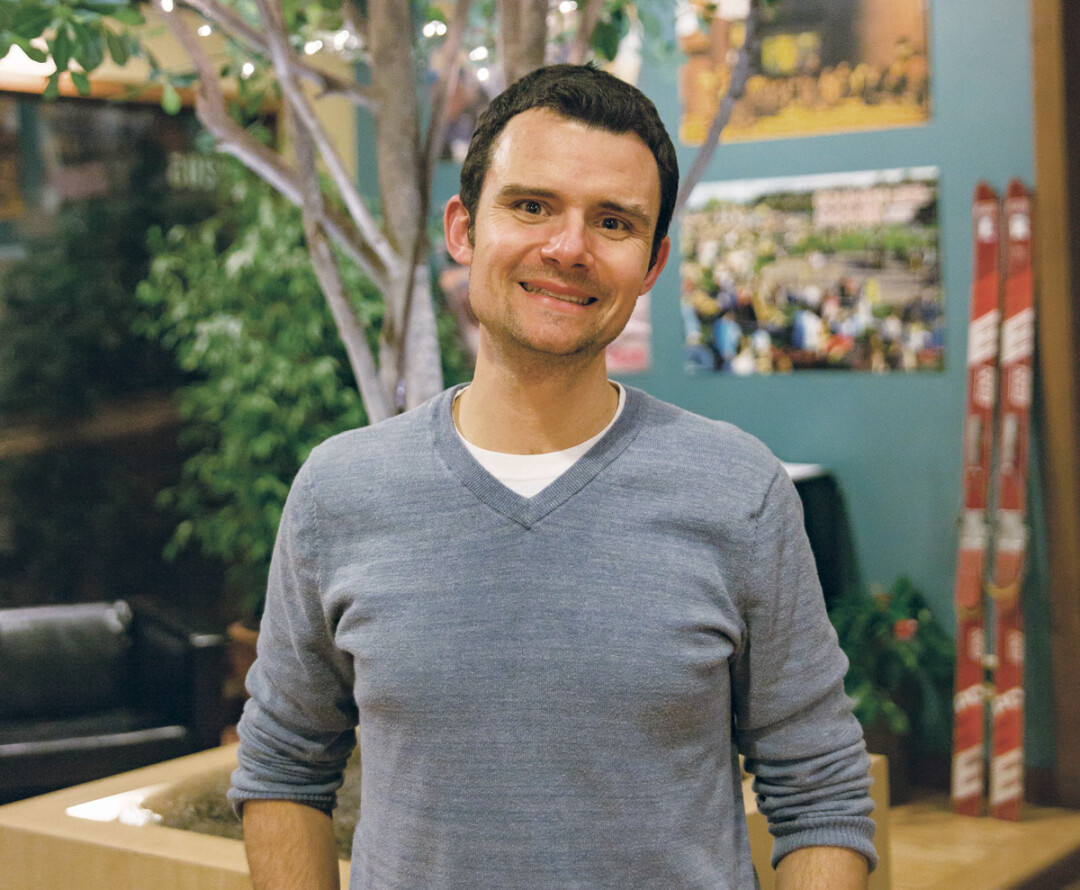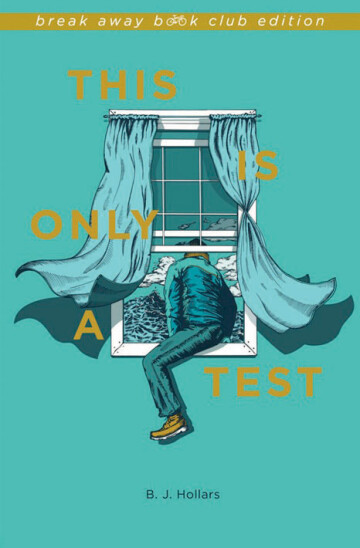Testing the Limits
from tornadoes to fatherhood, BJ Hollars’ new essay collection focuses on survival
Rob Reid, photos by Michael Lundebrek |

In April 2011, B.J. Hollars, his wife, Meredith, and their dog survived an EF-4 tornado by huddling together in a bathtub. To cope with the aftermath of the storm, Hollars wrote.
In fact, he found himself writing the same line over and over again: “I am trying to write my way out of disaster. I am trying to write myself out of disaster…” Though he could not actually write his way out of disaster, he did, in fact, write himself into a book. That book, This Is Only a Test, was published earlier this year by Indiana University Press.
“If I write about the trauma in different ways, perhaps I’ll crack the code on how best to tell the story.” – BJ Hollars on the disastrous themes in his new essay collection, This Is Only a Test
The title refers to the tests we face every day. “Sometimes they’re small, sometimes large, but they always require our full attention,” Hollars says. “Specifically it refers to the test of parenthood, a test I know I fail regularly.”
Hollars spent a year writing different essays in different styles about tornadoes while living in Tuscaloosa, Alabama, one of the sites of what he learned afterward was “the second most deadly weather outbreak in U.S. recorded history.”
Hollars feels that by returning to the subject of disasters, he’s trying to gain control. “If I write about the trauma in different ways, perhaps I’ll crack the code on how best to tell the story,” he says. “And also, to crack that code on how I can best protect my family. It seems silly, but there is a comfort in the repetition. I’m saying, ‘I have my eyes on you, Tornado. I haven’t forgotten you’re there.’ ”
The first essay, “Goodbye, Tuscaloosa,” shares the scary moments of hiding in the bathtub and then walking through the damaged city afterwards, retracing the tornado’s path, trying “to make sense of our shifted landscape.” At the end of the essay, we learn of the secret he and Meredith held in the sanctuary of that bathtub. “ ‘If we died,’ my wife said, staring at the plus sign on her pregnancy test, ‘then no one would’ve known about you.’ ”
More essays about the tornado follow, including a letter to the people of Joplin, Missouri, who experienced their own disastrous tornado that same spring. There is also Hollars’ whimsical but thought-provoking “A Test of the Emergency Alert System,” containing the following question: “Which of the following tools most effectively removes debris? a) Chainsaw, b) Axe, c) Bow saw, d) Poem.”
The book’s format is what Hollars calls “a constellation of essays,” a term he came up with and shares with his writing students at UW-Eau Claire. In a constellation, each star shines on its own. They also function to make a bigger picture. This Is Only a Test connects individual essays about not only tornadoes, but also drowning accidents, bombings, diseases, and nuclear threats. Each essay shines on its own while skillfully connecting with the others.
Woven among these essays about scary aspects of life and parenthood are Hollars’ little observations that reflect great hope. This uplifting optimism culminates in the last two essays in the book. “Punch Line” delivers the news of his wife’s pregnancy with their second child, the start of a new beginning. “Bedtime Story” is a letter from Hollars to his unborn daughter telling her of a mysterious light that appeared many years ago over her new home in Eau Claire and what her father believes it represented.
 A blurb on the back cover of his book sums it up best: “Hollars creates a constellation of grief, tapping into the rarely acknowledged intersection between fatherhood and fear, sacrifice and safety, and the humbling effect of losing control of our lives.”
A blurb on the back cover of his book sums it up best: “Hollars creates a constellation of grief, tapping into the rarely acknowledged intersection between fatherhood and fear, sacrifice and safety, and the humbling effect of losing control of our lives.”
This is Only a Test is available at The Local Store as well as online at bjhollars.com and other outlets. Hollars will read from the collection at 7pm Tuesday, March 29, in the Volume One Gallery.


















